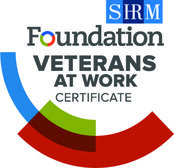Editors Note: This was updated on 12/20/2022
Our Experience with SCA Audits
On a late Friday afternoon in May, just before I am about to leave for a three-day holiday weekend, my phone rings at the corporate office in Maryland and it is the voice of a woman who is the last person I wanted to speak to at the end of a long week – a Department of Labor auditor. The woman seemed nice enough until she says, “a report has been made against your organization in North Carolina and I have been assigned to oversee the audit. I will be emailing you momentarily all of the documents I will need.” I receive the email and immediately called her back to ask, “Three days? I have three days to bring you payroll reports, rosters, and time cards for a workforce of 200 employees?” That is when she informs me if I do not comply with the SCA audit, the company will be in violation of her records request which could cause the organization to be assessed fines. So, my team and I pulled together all SCA policies and procedures, 2 years of employee records, a month’s worth of payroll records, and time cards for 6 months for 200 employees. All over a holiday weekend. It was a feat to be had, but the team pulled together and by Tuesday I was driving to North Carolina with 5 large bankers boxes to meet with the auditor on Wednesday morning.
Wednesday comes and the SCA audit begins. Two weeks later theSCA audit is over, and I receive my findings. They were good, but not great. The company was assessed almost $200,000 in back wages, but we were found to not be negligent in our practices, policies and procedures.
Tips to Survive an SCA Audit
- Be nice and play nice with the auditor. She can make or break the SCA audit’s findings. By playing nice with the auditor and offering assistance, she shared the reason for the audit – someone was not happy about not receiving their vacation benefit after being away from the contract for more than six months. I explained that the FAR clause pertaining to vacation benefits does not dictate length of separation when determining an anniversary date and vacation payout. The company set a generous policy that was in writing as to what would constitute a separation from the contract.
- Make sure you understand the FAR clauses. Especially those associated with SCA and wage & hour as it pertains to an SCA contract to include health & welfare benefits. By demonstrating knowledge of the FAR, we were able to justify the policies and procedures put into place and that the company put a considerable amount of thought in how to implement the corporate policies. The auditor in charge of an SCA audit may be able to be swayed to your line of thinking, assuming there is no specific rule against the action you’re taking.
- Be prepared for employees to talk to the auditor. The SCA auditor will request that you provide a number of employees to speak with her. Our auditor spoke with approximately 25 employees. We were able to identify 10 employees with the remainder identified by the auditor. The company was not aware that the auditor would speak to employees as we were told originally it was just a document request and management interview, so be aware of the changing requirements as your SCA audit goes on.
- The auditor is not limited in scope. The auditor will ask questions that are within the scope of DOL wage and hour and SCA. They are not limited to the complaint that was filed. We found out from employees who came to us asking why the auditor asked specific questions about pay practices, how we handled policy infractions, and more, all of which falls under an SCA audit, even if what your GovCon is being accused of has no bearing on the rest of the questions asked.
- The auditor will be reviewing ALL aspects of wage & hour and SCA compliance. The auditor asked questions of corporate, program management, and employees on topics such as how employees are paid, how they are compensated, are they compensated fairly under the wage determination based upon their labor category, do they work overtime, and do they receive all benefits in accordance with the SCA. Our auditor found that even though there was no overtime required on the contract and that we had a strict no overtime policy, employees were still using their own time to do tasks such as making copies at home or buying supplies for their workspace. It was deemed that this was in direct violation of overtime laws.
- The auditor will assess fines, penalties, damages, and lost wages. The fines, penalties, and damages are at the discretion of the auditor (this is where the “be nice and play nice” rule applies). Our SCA auditor felt that since we were forthcoming with information, knew our FAR clauses and how to apply them, and there was no willful misconduct by the organization that she would not assess fines or penalties under wage and hour or SCA. Yes, there could have been fines and penalties under both labor laws! However, the company was required to pay back wages of uncompensated overtime to 200 employees.
- The auditor will determine the amount of lost wages and when those wages must be paid. Our auditor made a determination and created a calculation of how much potential overtime was reasonable to be paid to the employees (both current and past employees) who had worked in the prior 22 weeks. For most employees who were employed for that entire look-back period, they received just over $1,000 in back overtime wages which had to be paid out within two weeks of DOL’s notice. If the company had been found to be negligent in violating SCA and/or wage and hour laws, punitive damages would have been assessed and paid to the employee. To put this in perspective, punitive damages are two times the amount of lost wages, intensifying the strength of the loss your GovCon will face.
Critical Takeaways for SCA Audits
This is how I survived and what I learned during a Department of Labor SCA Wage & Hour SCA audit. If I or my team had taken the stance that DOL was the enemy, if the company was not clear or consistent in SCA policies and practices or was found negligent in our understanding and application of SCA wage and hour laws, the outcome would have been catastrophic. The company did a review of a worst-case scenario and found that the end result would have been over $1,000,000.00 in punitive fines, damages, and back wages that would have been owed to either the DOL or to the employees. That’s a huge chunk of change for an up and coming 8(a) business. The company would have had to shutter their doors and more than 200 people would have lost their jobs.
Avoid being a “worst-case scenario” story by making yourself aware of the SCA Wage & Hour requirements on every contract, and hopefully you’ll be able to avoid an SCA audit altogether. If you would like guidance on where to start and how to focus, email BOOST LLC. [email protected]





